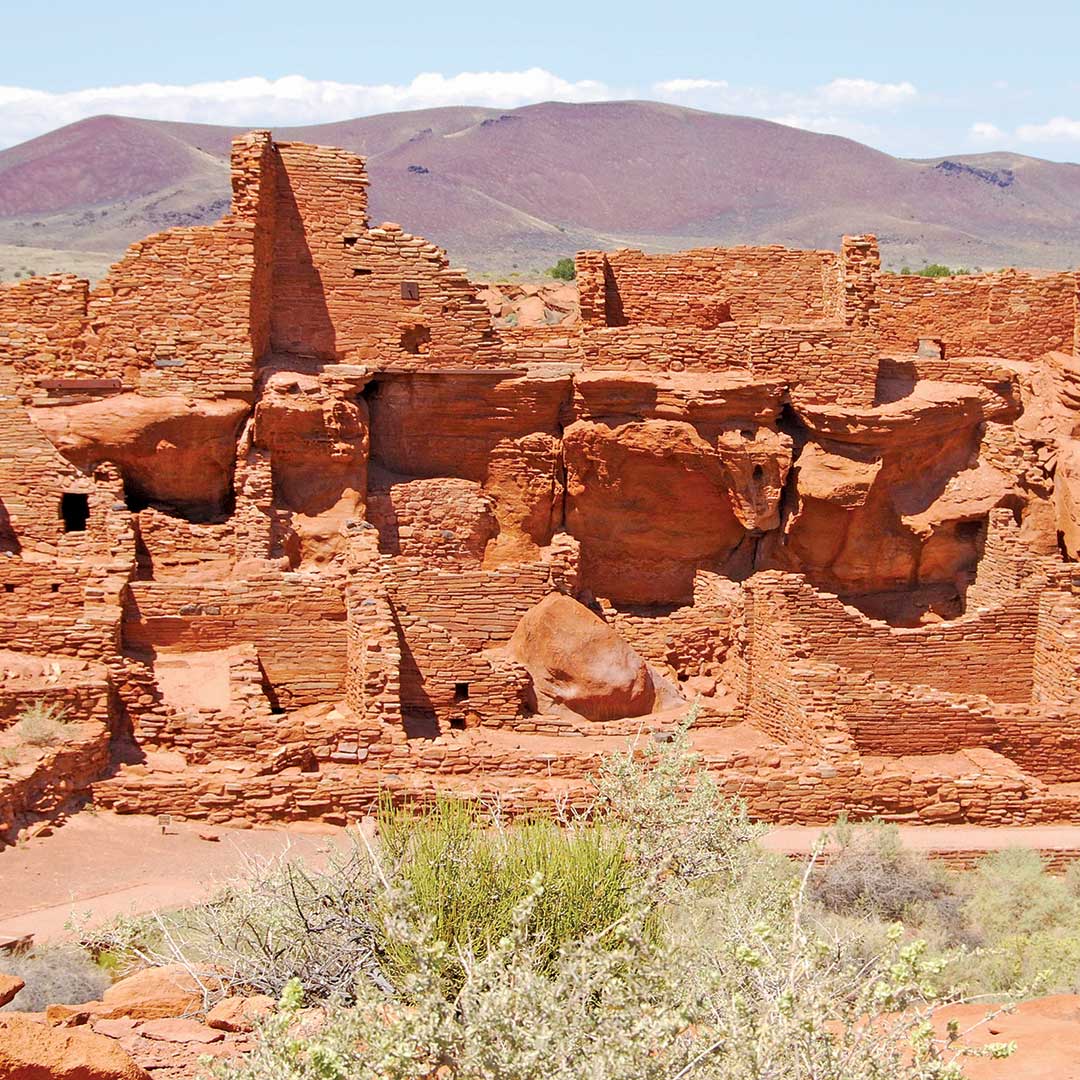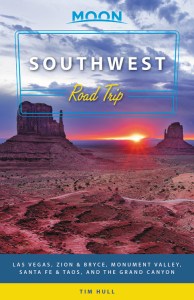Who Were the Sinagua and Where Did They Go?
The Sinagua left their architecture and masonry all over north-central Arizona, from the red-rock apartment buildings rising from the cinder plains below the San Francisco Peaks, the sandstone cliff hideouts of Walnut Canyon, the limestone castles in the lush, easy-living Verde Valley, to the brick-stone rooms leaning against Sedona’s red walls.
We don’t really know what they called themselves, but we call them, according to tradition more than anything else, the Sinagua, Spanish for “without water”—which alludes to the name used by early Spanish explorers for this region of pine-covered highlands still stuck somehow in aridity: Sierra Sin Agua (“mountains without water”).
Their cultural development followed a pattern similar to that of the Ancestral Puebloans in the Four Corners region. They first lived in pit-houses bolstered by wooden beams and made a living from small-scale dry-land farming, hunting, and gathering piñon nuts and other land-given seasonal delicacies. They made strong and stylish baskets and pottery (though they didn’t decorate theirs in the manner of the Ancestral Puebloans and others); they were weavers, craftspeople, and traders.

Around AD 700 a branch of the Sinagua migrated below the Mogollon Rim to the Verde Valley and began living the good life next to fish-filled rivers and streams that flowed all year around; these migrants are now called the Southern Sinagua, and the ones who stayed behind are called the Northern Sinagua. When, around AD 1000, the volcano that is now Sunset Crater, northeast of Flagstaff, erupted, there were Sinagua villages well within reach of its spewing ash and lava, though archaeologists have found evidence that nearby pit-houses had been disassembled and moved just before the eruption, leading to the assumption that they probably knew the big one was coming.
The eruption would not be the end of the Sinagua—quite the contrary. Though the reasons are debated—it could have been that crops grew to surplus because a posteruption cinder mulch made the land more fertile, or it could be that the years following the big blow were wetter than normal, or it could be a bit of both—after the eruption Sinagua culture began to become more complex, and soon it would go through a boom time.
From roughly 1130 to 1400 or so, Sinagua culture flourished as the Sinagua lands became an important stop in a trade network that included Mexico to the south, the Four Corners to the north, and beyond. At pueblo-style ruins dating from this era, archaeologists have found shells, copper bells, and macaw bones, all from Mexico. Sinagua architecture became more Puebloan, and villages often had Mexican-style ball courts and kivas similar to those of the Ancestral Puebloans. It is from this era that the famous ruins protected throughout this region date.
Then it all ended. Owing to drought, disease, war, civil strife, a combination of these, or some other strange tragedy we will never learn about, by the early 1400s the Sinagua culture was on the run. By 1425, even the seemingly lucky farmers of the Verde Valley had abandoned their castles. The survivors and stragglers mixed with other tribes, their kind never to be seen again. Lucky for us they were such good builders.

To learn more about the Sinagua, check out the easy-to-read booklet Sinagua, written by Rose Houk, part of the Western National Park Association’s series “Prehistoric Cultures of the Southwest.” This and many other booklets in the series are available at Wupatki and other Sinagua sights near Flagstaff and in the Verde Valley. There are also displays on the Northern and Southern Sinagua at all of the ruins near Flagstaff and in the Verde Valley. The information above comes from various museum displays and Houk’s excellent booklet.
